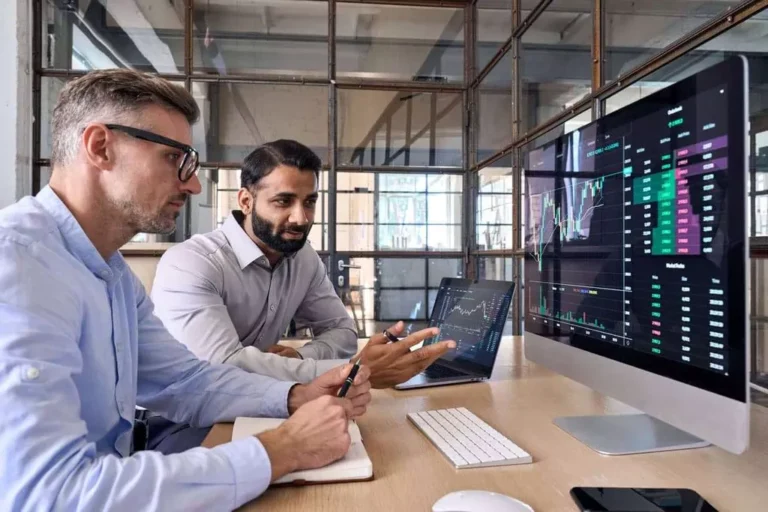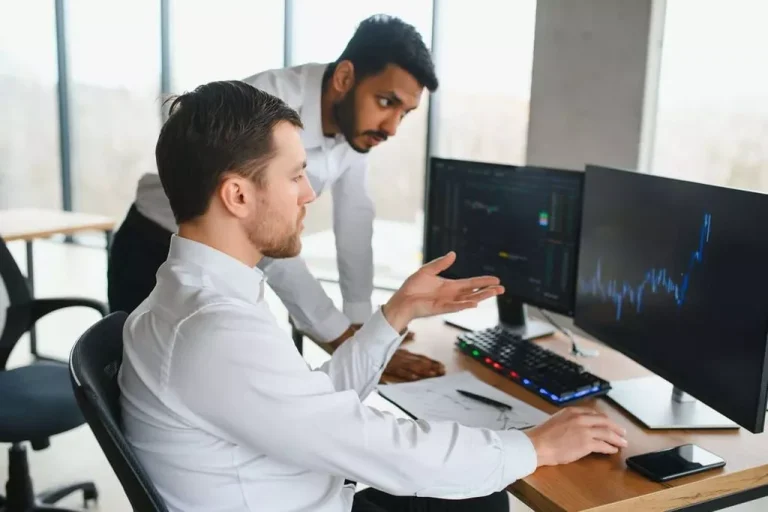Content
Thirdly, as investment banks play a crucial role in mergers and acquisitions, there is a possibility that the traders might use their power to access inside information and leverage merger arbitrage. The automated trading software can calculate Option Greeks, quote bid/ask spread, and input the market data. Nevertheless, human traders need to modify algorithmic trades, identify new opportunities, manage overall risk, and hedge their positions. In recent https://www.xcritical.com/ years, Wall Street investment banks have witnessed squeezing margins due to the prevalence of Direct Market Access and the decline of full-service equity commissions. Additionally, other low-cost electronic trading platforms pushed the equity commission lower.
What is proprietary trading and how does it work?
They bear direct liability and risk, often control execution, and tweak the strategies in the trading operation. Chart Pattern Analysis involves traders analyzing chart patterns looking for confluence, and trading the signal. This type of trading proprietary desk is typically completed at trading organizations by discretionary traders. The ability to leverage sophisticated modeling and trading software for critical decision-making also adds to these firms’ advantage. However, I must mention that Proprietary trading is somewhat risky and results in fluctuating returns.
Common mistakes made while setting up the Proprietary Trading Desk
You can select a course from the range of specialisation courses to get ahead. Visit QuantInsti blog to watch a video on the basics of market-making strategies.
How do proprietary trading strategies vary?
Not maintaining detailed records of trading strategies, decisions, and performance metrics. Failing to adapt and refine strategies based on performance analysis and market changes. Focusing on a single asset class or trading strategy increases vulnerability to market changes. Information posted on IBKR Campus that is provided by third-parties does NOT constitute a recommendation that you should contract for the services of that third party. You will be required to adhere to formalities when registering the firm/entity.
- However, proprietary trading desks can also function as market makers, as outlined above.
- Hedge funds and proprietary trading are both prominent players in the financial industry, but they differ in their objectives, structures, and activities.
- Less regulation and governance might mean lesser operating costs, but a prop trader has no regulatory norms to fall back upon.
- You can select a course from the range of specialisation courses to get ahead.
- There is always a risk that principals might steal the ideas and the winning formulas.
- Stay updated with market trends, conduct thorough research, and maintain detailed documentation of your trading activities.
Buys and sells are typically executed by traders, but algorithmic trading is important for a growing number of prop shops. Stock market pundits also informally refer to this kind of activity as ‘prop trading’. Before you think otherwise, the funds that these firms use for trading or investing in the stock market are their own and not those of their clients. A Trading Desk is a specialized unit within a financial institution that executes trades in various securities. It serves as the nerve center for buying and selling activities, using both human expertise and advanced technology to navigate market dynamics.
Trading Desks operate in a tightly regulated environment and need to adhere to financial regulations such as MiFID II in Europe and Dodd-Frank in the US. Compliance involves implementing robust systems, training staff, and keeping up-to-date with the ever-changing regulatory landscape. It also impacts how trades are executed, reported, and how trading desks interact with clients.
We don’t care if your parents are successful, and we don’t care where you went to school. We know what it’s like to be on a real physical prop desk, and that’s what we’ve created now in a fully remote online environment. We expect to have communications with you if needed throughout the trading session.
There are mainly three types of Trading Desks – Agency, Proprietary, and Programmatic. Proprietary Desks trade using the firm’s money, aiming to generate direct profits. Programmatic Desks use sophisticated algorithms and real-time bidding for trade execution. Trading desks are specialized units within financial institutions, responsible for executing trades and managing investment risk.
The foot soldiers of the trading desk, desk traders, execute trades as per the strategies devised by the head trader and the team. This individual oversees the desk’s operations, making crucial decisions about risk-taking, managing relationships with clients and regulators, and setting strategic direction. Trading desks are specialized departments within financial institutions that execute securities transactions. Below we will discuss the commonly made mistakes to avoid while setting up the proprietary trading desk. Any information posted by employees of IBKR or an affiliated company is based upon information that is believed to be reliable.
Choosing a reputable and trusted operator is crucial so that, as a trader, you can fully focus on getting the results needed to advance your trading career. Prop traders face the same challenges as other traders but benefit from access to capital, technology, and interaction with other skilled traders. The Volcker Rule, established in 2010, was a regulatory measure enacted as part of the Dodd-Frank Wall Street Reform.
This article is prepared for assistance only and is not intended to be and must not alone be taken as the basis of an investment decision. Please note that past performance of financial products and instruments does not necessarily indicate the prospects and performance thereof. Moreover, the integration of cloud computing has endowed proprietary trading desks with scalability and cost-effectiveness. Through cloud services, these desks gain access to formidable computing power on-demand, facilitating the development and deployment of intricate trading strategies. Develop a well-defined and tested trading strategy, and implement robust risk management practices to protect your capital. Invest in reliable technology infrastructure, comply with regulatory requirements, and hire a skilled team to drive your trading operations.
Proprietary trading involves financial institutions using their own capital to engage in trading activities for the purpose of making profits. Proprietary traders execute trades through sophisticated trading platforms, leveraging technology and high-speed connectivity to swiftly enter and exit positions. The profitability of proprietary trading depends on the traders’ skills, market conditions, and risk management practices.
While regulations aim to protect investors and ensure market integrity, they also have profound implications for trading desk operations. They influence the way trades are executed, reported, and even how trading desks interact with their clients. Lastly, foster a culture of continuous learning and improvement to adapt to market changes and enhance your trading strategies. By adhering to these tips and avoiding common mistakes, you can set up a successful proprietary trading desk and achieve your trading goals. In the case of manual trading, you mainly need a monitor for regular monitoring of markets. Whereas, for setting up an algorithmic trading desk, apart from a sound knowledge of algorithmic trading, you will need infrastructure, platform, risk management practice, backtesting etc.




